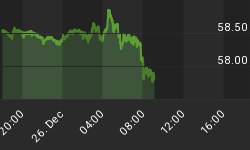What a difference a year and a tsunami make.
Western investors have been salivating over the post-Soviet space's energy riches since the 1991 collapse of communism. While focusing on the Caspian's hydrocarbon reserves other mineralogical riches awaited development as well, none more so than Kazakhstan's vast uranium deposits.
Given an investor-friendly government in Astana, the country's uranium deposits seemed to be the Next Big Thing, an attitude encouraged by the government of President Nursultan Nazarbayev. Kazakhstan contains the world's second-largest uranium reserves, estimated at 1.5 million tons. Until 2009 Kazakhstan was the world's No. 3 uranium miner, exceeded only by Australia and Canada; the three countries account for more than half of global uranium production.
A mere five years ago Kazakhstan produced 5,279 tons of uranium, 21 percent more than in 2005.
Even better, local markets seemed assured in the form of Asia's rising economic powerhouses China and India. China's Commission of Science Technology and Industry for National Defense in its 11th Five-Year Plan for the Nuclear Industry said China intended to produce 40 gigawatts of nuclear power electrical generating capacity by 2020. Even though nuclear power currently accounts for just 1.4 percent of China's electrical power generation, China's planned nuclear power reactors were estimated to need 44 million pounds of uranium annually, as more than 16 provinces, regions and municipalities announced intentions to build NPPS, bringing the country's total of 77 planned and proposed new reactors.
Similarly India, where nuclear power currently accounts for a paltry 3-4 percent of the country's power needs; India has 19 planned and proposed nuclear power reactors, announced similar development plans.
Seeking to feed its neighbor's ambitions, in February 2009 Kazakh Minister for Energy and Mineral Resources Sauat Mynbayev announced to the Mazhilis parliamentary chamber that Kazakhstan's state-owned nuclear company Kazatomprom intended to boost uranium production by 40 percent in 2009 to 11,900 tons compared to 2008's output of 8,512 tons, with two new mines, Khorasan-1 and Khorasan-2 coming online. In contract, in 1997, six years after independence, 1997 Kazakhstan produced a mere 795 tons of the silvery metal.
The only snag in this rosy picture was that uranium, unlike other energy commodities in the global market, is not traded freely. Currently about 15 percent of uranium is sold via the spot market while long-term contract pricing accounts for the remaining 85 percent, which benefits consumers as it locks in long-term prices to the detriment of producers. It is a situation that the Kazakh government expressed interest in changing, in September 2008 floating the idea of establishing what to all intents and purposes would be an international uranium commodity market.
In December 2009 Kazatomprom announced it had passed Canada and Australia to become the largest miner of uranium in the world, increasing the country's 2009 uranium production by 63 percent to 13,900 tons, roughly 30 percent of the world's output. In 2010 Kazakhstan increased its uranium output to 17,803 tons a 27% increase over its 2009.
Ever optimistic, Kazakhstan has put a brave face on its uranium mining industry in the wake of the Fukushima tragedy.
Speaking at the Minex conference in Astana on 5-7April, Kazatomprom president Vladimir Shkol'nik downplayed the impact of the Fukushima crisis, stating that it would not greatly influence the Kazakh state atomic company's plans.
Immediately after the Fukushima disaster the uranium spot price tanked from over $70 per pound to just $49 per pound but has since recovered rebounding to over $60, well above 2009's average price.
For all of Astana's bravado, the long-term consequences of Fukushima's impact remain unclear. Germany and Switzerland have both announced plans to shutter their nuclear plants, while Italian voters earlier this month overwhelmingly rejected a referendum to restart the country's nuclear program. While currently abandonment of nuclear power remains an option limited to affluent countries, one more cataclysm may nail the coffin lid of the nuclear power industry shut for good.
And that news may be coming from the United States, birthplace of the nuclear era and currently home to 104 NPPs. On 7 June, a fire at Nebraska's Fort Calhoun nuclear power plant knocked out the cooling process for spent nuclear fuel rods for 90 minutes. The NPP, adjacent to the still-flooding Missouri River, is close to the capital Omaha and has been closed since April for refueling. According to local NBC affiliate WOWT, "The Ft. Calhoun Nuclear Facility is an island right now but it is one that authorities say is going to stay dry. They say they have a number of redundant features to protect the facility from flood waters that include the aqua dam, earthen berms and sandbags." A spokesman for Omaha Public Power District says the plant is at a "notification of unusual event" classification because of the flooding.
In an era of globalization, Ol' Man River may drown Kazakhstan's hopes for its uranium mining industry, as another nuclear debacle in the U.S. following in the wake 1979's Three Mile Island accident will undoubtedly prove too much, even for Madison Ave.'s PR spin doctors. No NPPS have been built in the U.S. since Three Mile Island and should bad things happen at Ft. Calhoun, where the Missouri's water's are still rising, the global market for uranium fuel for NPPs worldwide is going to crater, beginning with the U.S.
Source: http://oilprice.com/Energy/Energy-General/Kazakhstans-Uranium-Industry-Could-Lose-Its-Luster.html
By. Dr. John C.K. Daly for OilPrice.com. For more information on oil prices and other commodity related topics please visit www.oilprice.com
















